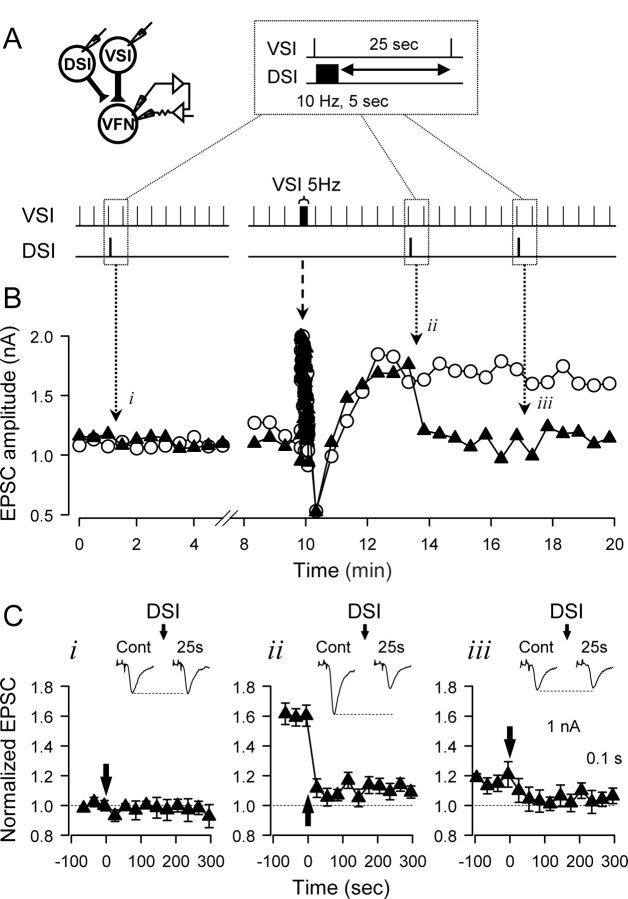Figure 2.
Heterosynaptic depotentiation by a DSI spike train. DSI reduced the VSI-VFN EPSC amplitude only when the synapse was in the potentiated state. A, Experimental protocol. Intracellular electrodes were placed in DSI and VSI for eliciting action potentials. The membrane potential of the postsynaptic VFN was held constant by two-electrode voltage clamp. VSI was stimulated to fire one action potential every 30 s. DSI was stimulated to fire a train of action potentials (10 Hz, 5 s) that ended 25 s before the next VSI spike. B, DSI stimulus trials were delivered once before (i) and twice after (ii, iii) a VSI spike train (5 Hz, 15 s). B, EPSC amplitudes from two recording sessions in the same neurons, one without DSI stimulation (white circles) and one showing three trials of DSI stimulation (i, ii, iii, black triangles:). The first DSI spike train (i) had no effect on EPSC amplitude. The 5 Hz VSI spike train shifted the EPSCs into a potentiated state. In the potentiated state, a DSI spike train depotentiated the EPSCs (ii). A subsequent DSI train had little additional effect (iii). C, The mean amplitudes of VSI-evoked EPSCs normalized to the basal state are shown from three conditions: i, basal state (before VSI spike train, n = 8); ii, potentiated state (first trial after VSI train, n = 12); iii, basal state (second trial after VSI train, n = 8). The DSI spike train is represented by the arrow. The insets show the EPSC recordings before and 25 s after the DSI stimulation.

